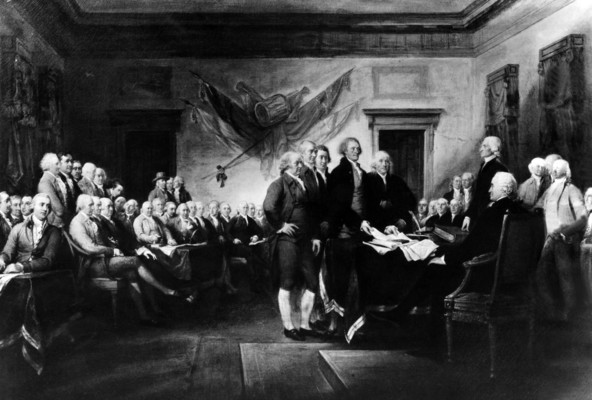An abridged version of the Declaration of Independence is recited by a group of Convention of States Action Florida patriots in this three-minute video.
It uses only original wording in a shortened version to get the essence (the full version takes 10 minutes to recite).
To help restore D.C. to the limits Thomas Jefferson and the Continental Congress intended when they wrote these words, please browse ConventionOfStates.com. This website has info on the project, statements of support, and a petition calling for an Article V Convention.
Sign the petition to let your state legislators know your viewpoint and consider volunteering to further help make it happen.
Below is the basis of the Declaration, its history, the text of the abridged version, and a description of each image in the video.
The Declaration’s Basis
The Declaration of Independence formally notified the world that the 13 American colonies were now sovereign “Free and Independent States” with no political connection to the King and Great Britain. The colonists were no longer British citizens. They became citizens of their state.
They declared this together using the heading "The unanimous Declaration of the thirteen united States of America.” Note their use of the lower case “u.” The Declaration in the closing paragraph is stated to be made by "the Representatives of the united States of America, in General Congress".
In July of 1776 the thirteen states claim equal, sovereign footing with the “State of Great Britain.” Each claimed “full Power” to do all things “Independent States may of right do”.
The central government of the Union was not created until years later. The first form was ratified in 1781, under the Articles of Confederation. Today's federal government came into existence on June 21, 1788, when the U.S. Constitution took effect, twelve years after the states became independent.
In 1788 the states delegated a few of their powers to the central government. Prior to the 1860s, the Union was commonly referred to as "these United States of America."
The Declaration states that the colonies had authority to separate because the King was violating the natural rights of the citizens. It notes there are “certain unalienable Rights” inherent in all mankind by the “Laws of Nature.” It states that governments are formed to secure these rights, “deriving their just powers from the consent of the governed.”
The Declaration lists 27 grievances the colonists had against King George III, specifying violations of their unalienable natural rights. These included legislation and taxation without representation, warrantless searches, obstructing immigration, blocking free trade, denial of due process, mandated purchases, and erecting a “multitude of new Offices” to “harass our people and eat out their substance.”
Declaration History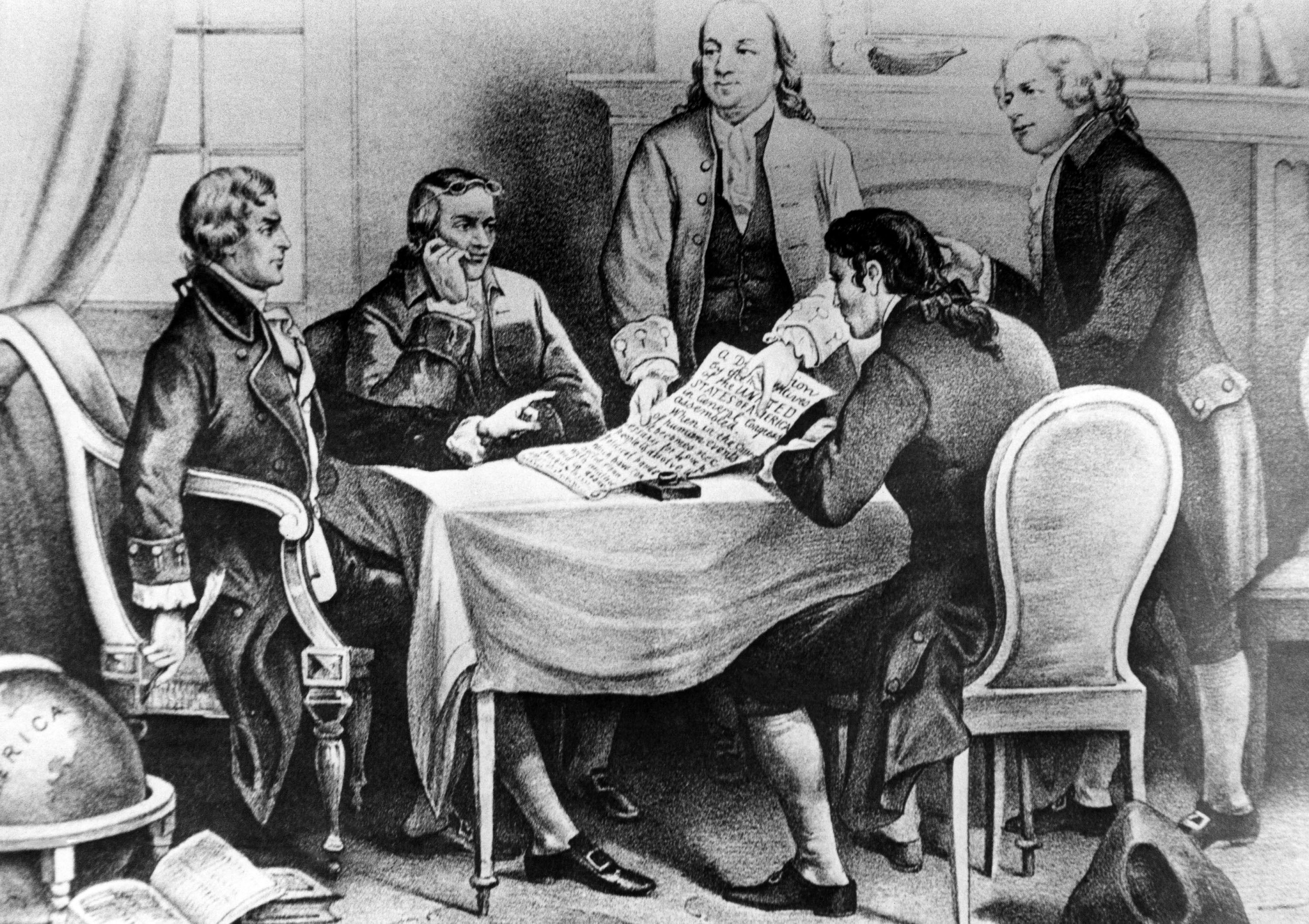 By the spring of 1776, the colonists had been at war with England for a year. That June, the Continental Congress requested that Thomas Jefferson write a formal document declaring their independence. Jefferson’s draft was edited by Ben Franklin and John Adams before final edits were administered by the Continental Congress.
By the spring of 1776, the colonists had been at war with England for a year. That June, the Continental Congress requested that Thomas Jefferson write a formal document declaring their independence. Jefferson’s draft was edited by Ben Franklin and John Adams before final edits were administered by the Continental Congress.
On July 2, 1776, the Lee Resolution was passed by the Continental Congress. The resolution says that "these United Colonies are, and of right ought to be, free and independent States.” In it they dissolved “all political connection between them and the State of Great Britain.” This action made each of the 13 States sovereign equals to the State of Great Britain. Therefore, July 2 was the formal beginning of our independence.
On July 4, 1776, the Declaration of Independence was unanimously approved by the Continental Congress in what is now know as 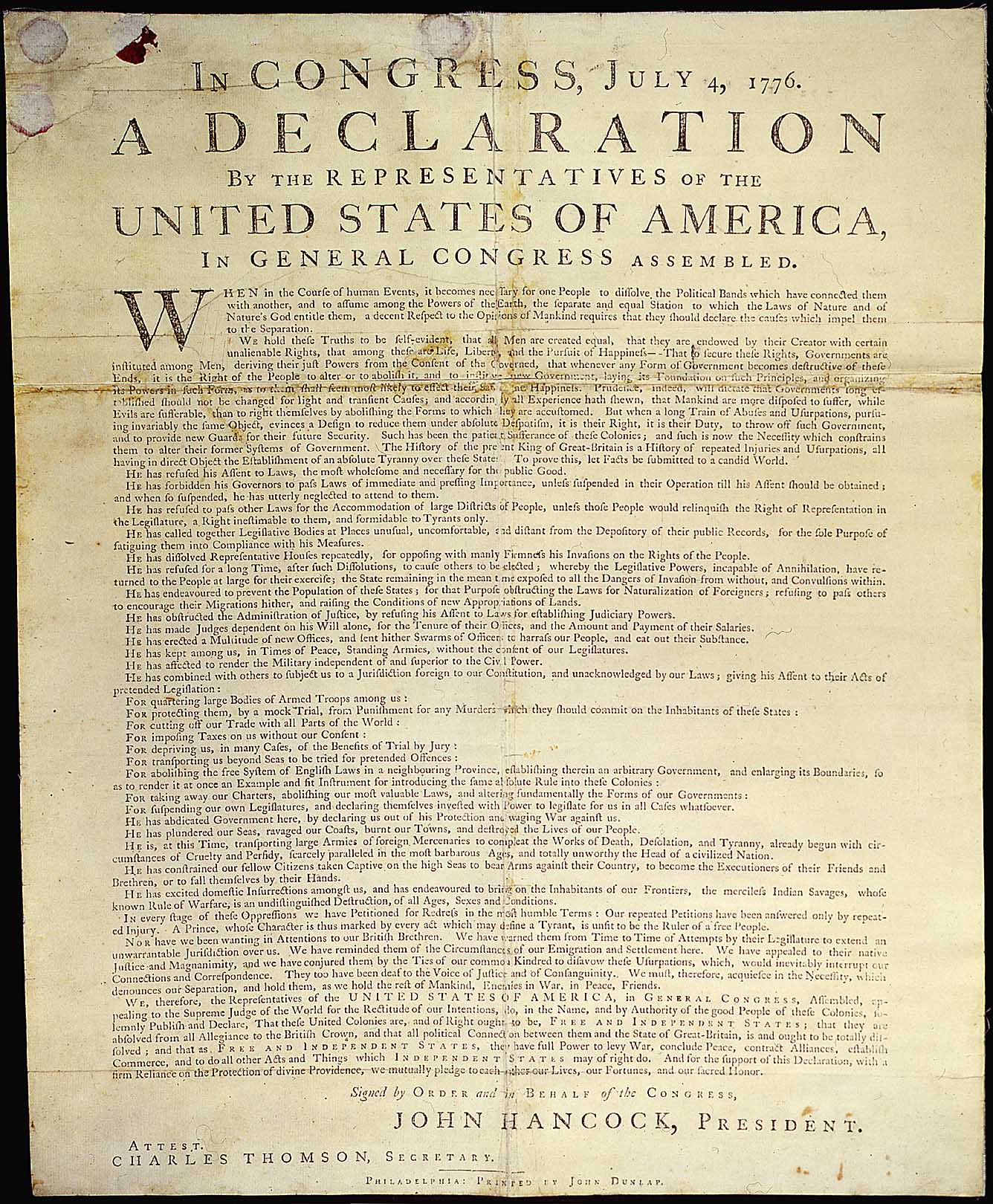 Independence Hall in Philadelphia, PA. About 200 copies were typeset and printed the night of July 4 by John Dunlap, called the “Dunlap Broadsides.”
Independence Hall in Philadelphia, PA. About 200 copies were typeset and printed the night of July 4 by John Dunlap, called the “Dunlap Broadsides.”
These were widely distributed, with one sent to King George III. Twenty-six known Dunlap Broadsides remain, including one hidden behind an old framed painting (bought in 1989 for four four dollars at a flea market in Pennsylvania).
The Dunlap version has a typeset “John Hancock, President” and no signatures. The version approved by the Continental Congress on July 4th, and used as the source for the Dunlap Broadsides printing, has been lost.
Late in July 1776, the Continental Congress commissioned a calligraphy version of the Declaration of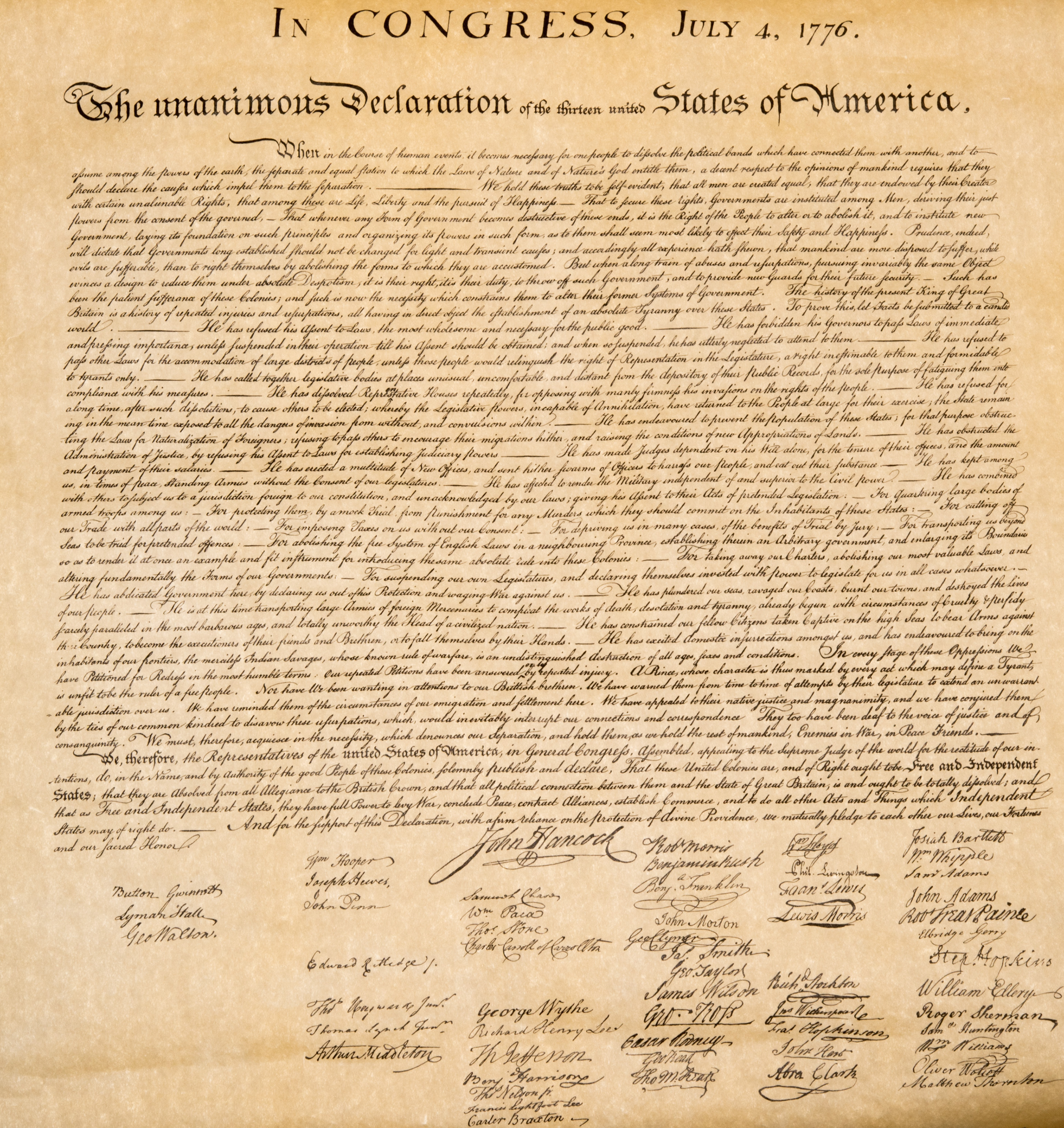 Independence. This skin parchment version was signed on August 2, 1776, and is the one with the large “John Hancock” and other signatures. It is now displayed in the National Archives, in Washington, D.C.
Independence. This skin parchment version was signed on August 2, 1776, and is the one with the large “John Hancock” and other signatures. It is now displayed in the National Archives, in Washington, D.C.
Recited Abridged Version
1. We hold these truths to be self-evident, that all men are created equal … with certain unalienable Rights…
2. to secure these rights, Governments are instituted … deriving their just powers from the consent of the governed…
3. whenever any … Government becomes destructive … it is the Right of the People to alter or to abolish it …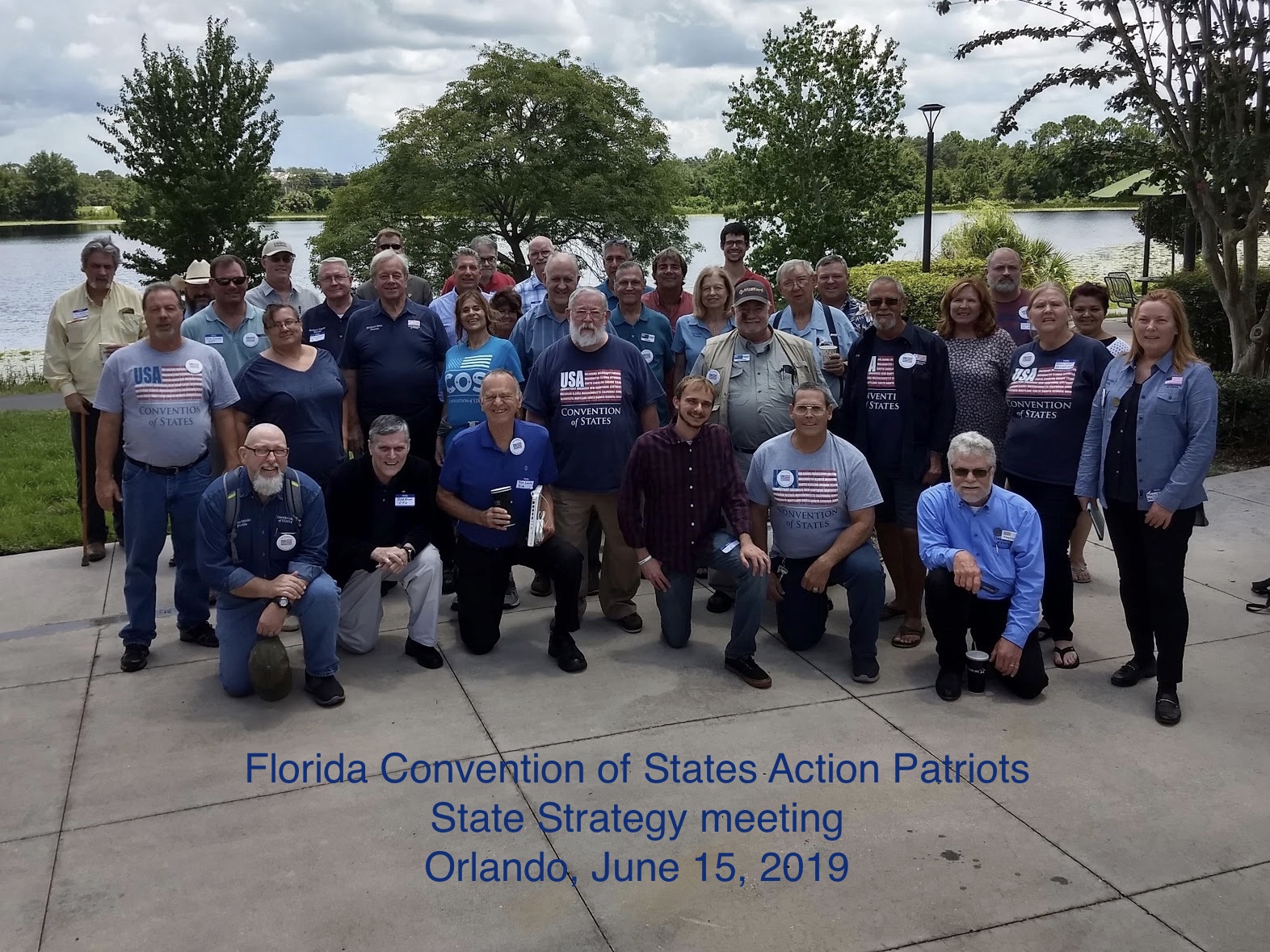
4. it is their right, it is their duty, to throw off such Government…
5. The history of the present King … is a history of repeated injuries … To prove this, let Facts be submitted to a candid world…
6. He has forbidden his Governors to pass Laws of … importance…
7. He has … obstruct(ed) the Laws for Naturalization of Foreigners…
8. He has obstructed the Administration of Justice…
9. He has made Judges dependent on his Will alone…
10. He has erected a multitude of New Offices, and sent hither swarms of Officers to harass our people and eat out their substance…
11. He has kept among us, in times of peace, Standing Armies…
12. He has affected to render the Military independent of and superior to the Civil Power…
13. For cutting off our Trade with all parts of the world…
14. For imposing Taxes on us without our Consent…
15. For depriving us … of the benefit of Trial by Jury…
16. We, … the Representatives of the united States of America, … do, … by Authority of the good People of these Colonies, solemnly publish and declare, That these united Colonies are … Free and Independent States…
17. and that … they have full Power to levy War, conclude Peace, contract Alliances, establish Commerce, and to do all other … Things which Independent States … do …
18. And for the support of this Declaration … we mutually pledge to each other our Lives, our Fortunes, and our sacred Honor.
Image Descriptions
The images used in the recital video for the lines read as numbered above are described below.
1. Statute of George Mason, author of the Virginia Declaration of Rights, in his Memorial in Washington D.C.
2. “Declaration of Independence”, a painting by George Trumbull, of the Continental Congress in 1776, in Independence Hall, Philadelphia
3. American patriots in a reenactment of the Revolutionary War's Battle of Monmouth in Freehold, NJ
4. Man dressed as an American Revolutionary War soldier, with a flag, shooting a pistol
5. The Declaration of Independence animal skin parchment calligraphy version, signed on Aug 2, 1776, now displayed in D.C.
6. The Declaration with a 1776 united States of America flag
7. Woodcut illustration of a 1700s American home’s kitchen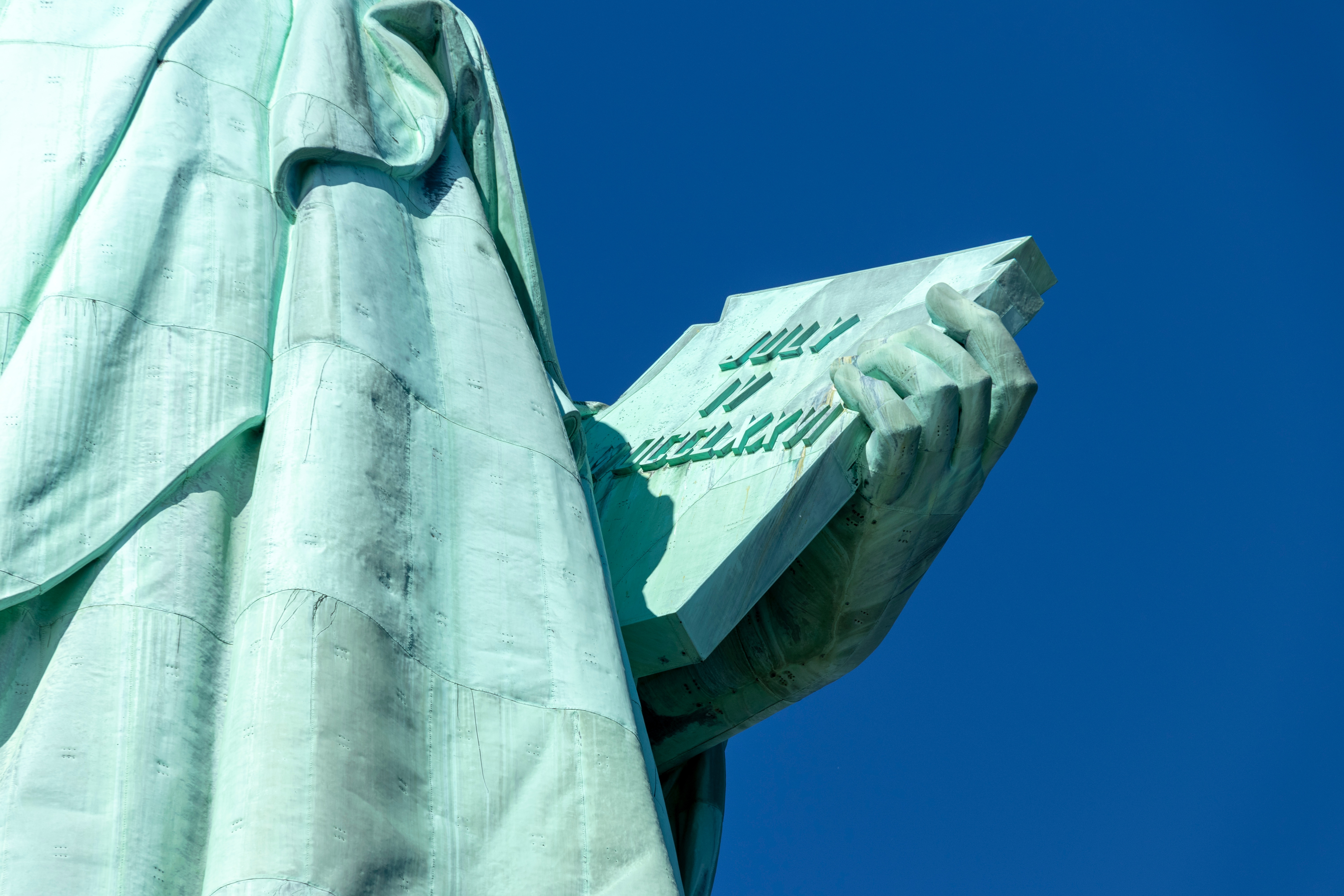
8. Closeup of the copper Statute of Liberty's tabula ansata (tablet invoking the law), showing the inscribed date (July 4, 1776)
9. A 1700s Judge depiction
10. British Army officer General Thomas Gage, Governor of Massachusetts Bay in 1775, who attempted under order of the King to seize the patriot’s weapons in the Battle of Lexington and Concord, final spark starting the Revolutionary War
11. Men in colonial British soldier’s uniforms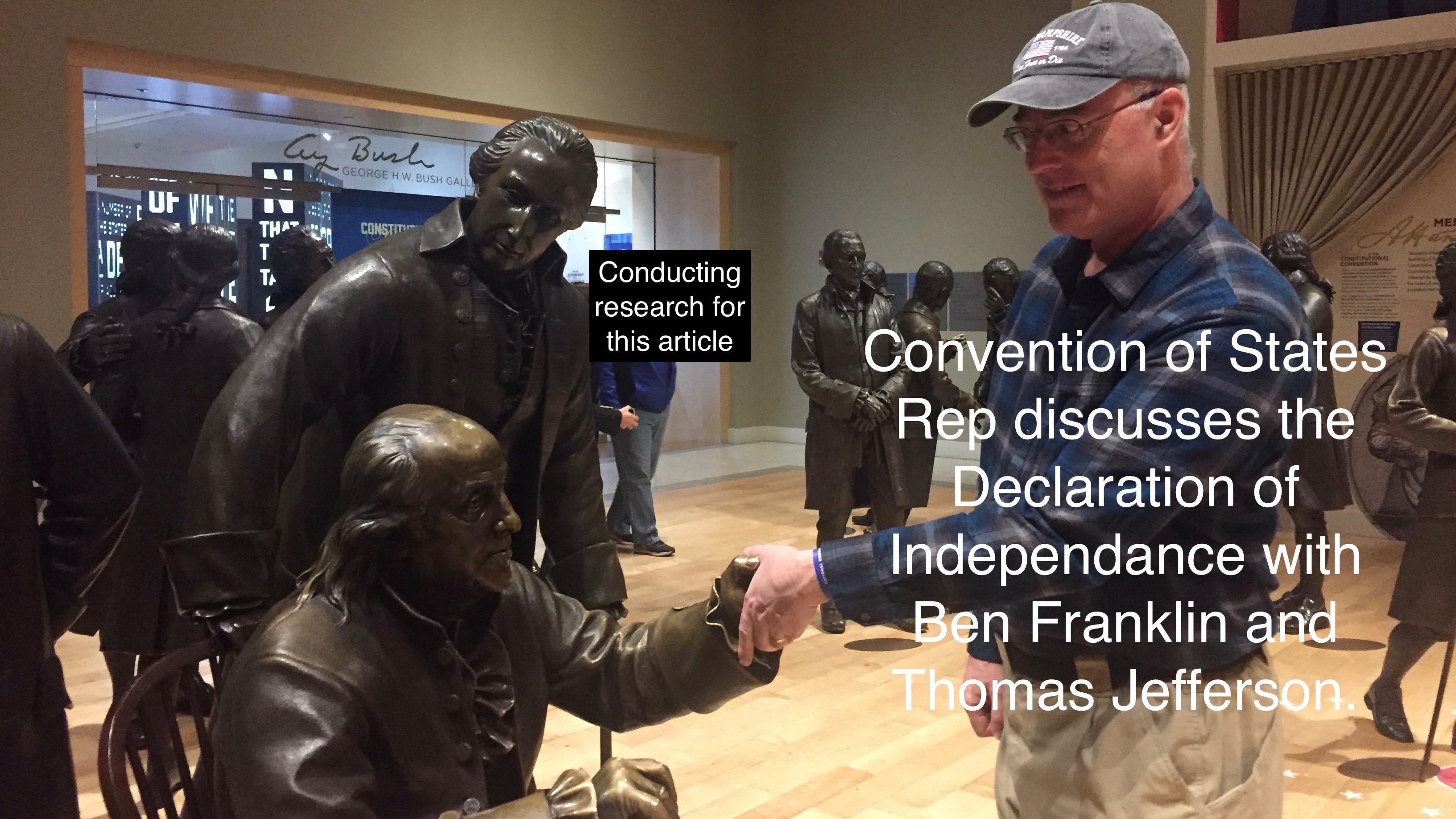
12. Men in British soldier's uniforms in a reenactment of the Victory of Yorktown in Yorktown VA, where the British Army was defeated, ending the American Revolutionary War
13. Vintage frigate sailing ship
14. Tax stamps for the American colonies, used under the Stamp Act of 1765
 15. Alexander Hamilton, defense attorney, in NYC court, representing Peter Zenger, accused of seditious libel against the colonial Governor
15. Alexander Hamilton, defense attorney, in NYC court, representing Peter Zenger, accused of seditious libel against the colonial Governor
16. Thomas Jefferson, Roger Sherman, Ben Franklin, Robert Livingston, and John Adams, 1776, working on the Declaration of Independence
17. Independence Hall, Philadelphia, where the Declaration of Independence was signed by the Continental Congress
18. John Hancock signs "The unanimous Declaration of the thirteen united States of America", Aug 2, 1776


